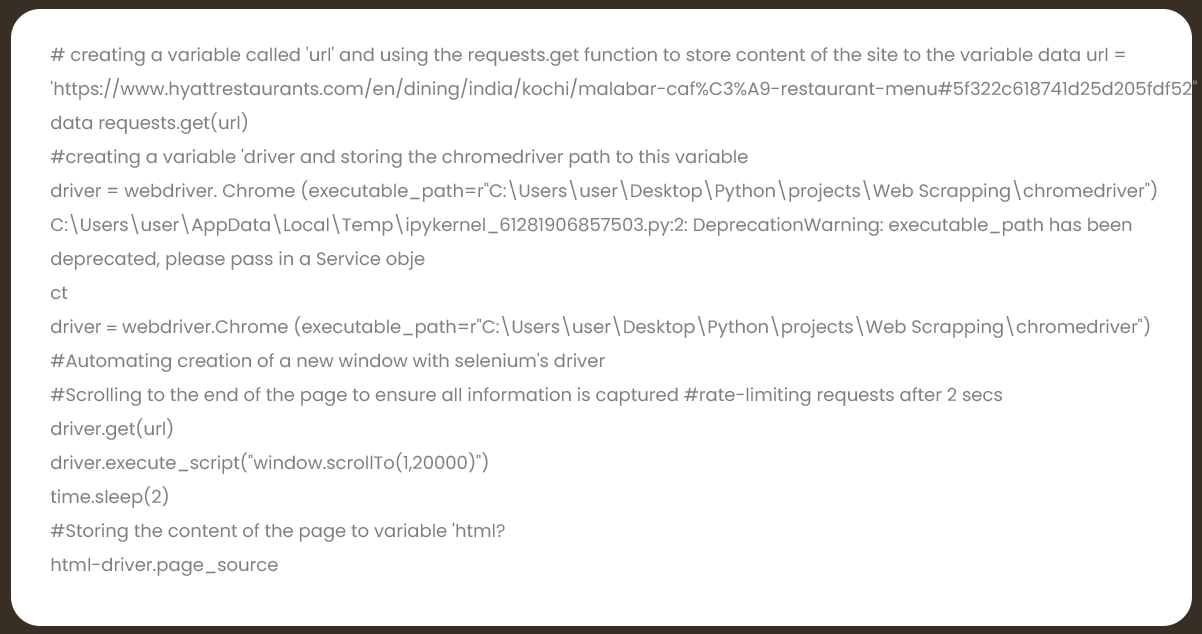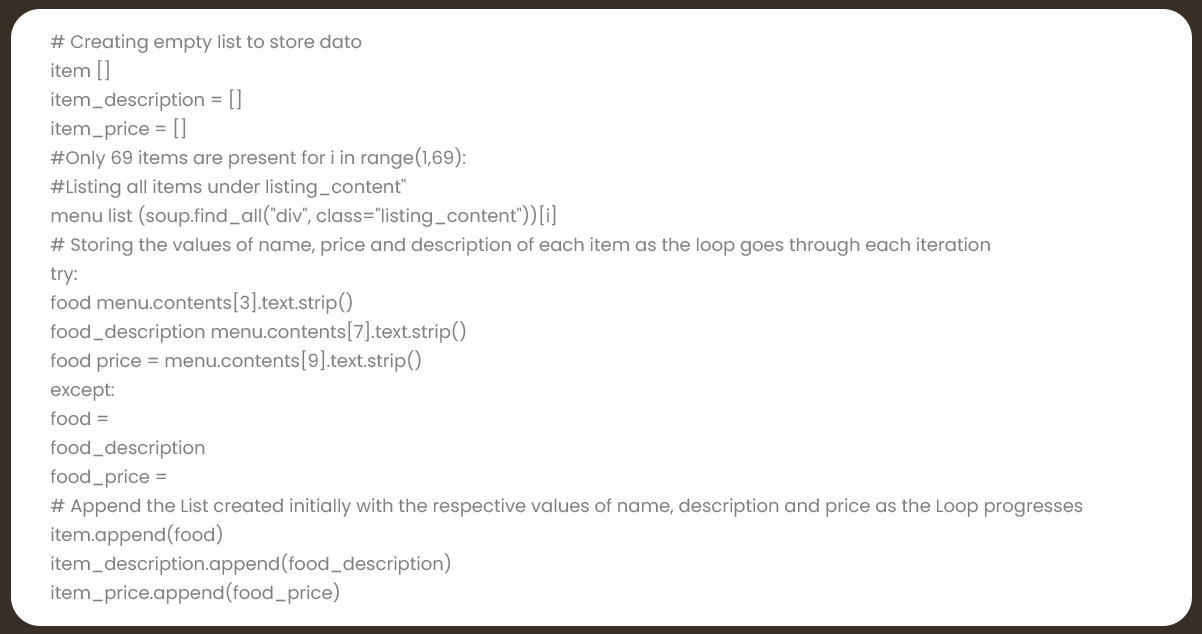The process of digitizing restaurant menus has become incredibly straightforward, thanks to technological advancements. Businesses now use restaurant data scraping to obtain distinct information from local restaurant menus. In the food industry, delivering exceptional service and flavors is paramount, with menu discussions paramount.
To enhance your restaurant's customer interaction, having a website where patrons can provide feedback is essential. In this technology-driven age, businesses strive to engage and transact with customers effectively, making a well-maintained restaurant website valuable for driving traffic to your establishment.
What Will Distinguish Your Restaurant Business from the Competition?
The food and beverage industry is one of the most competitive globally, requiring constant adaptation. Data is essential for informed decision-making, yet acquiring it can be a formidable task. Fortunately, web scraping restaurant data unlocks a wealth of data from the internet, enriching your business and elevating your restaurant.
Restaurant data scraping services gather comprehensive restaurant details, from names and phone numbers to customer reviews and menus, all meticulously organized in databases. This data lets you chart a strategic course for your restaurant business.Digitizing food menus delivers multifaceted operational benefits. Faster order processing, optimized inventory management, and improved supply chain logistics contribute to increased efficiency. Digitizing menus saves valuable time and resources for other critical tasks.
- Menu Digitization: Digitizing menus enhances operational efficiency and keeps your restaurant up-to-date with the latest technology trends, improving overall business performance.
- Budget Allocation: Savings from menu digitization can be redirected to core activities like marketing and promotion, enhancing revenue, and expanding services.
- Infrastructure Cost Reduction: Creating digital menus eliminates the need for additional staffing and training, streamlining your operations and cutting unnecessary expenses.
What are the Advantages of Restaurant Data Scraping for Your Business?

- Competitor Analysis: Leveraging restaurant menu data scraping is essential to stay competitive in an ever-evolving market. Extract valuable insights from competitors' websites to inform product launches and discover innovative marketing strategies. Scrutinize their financial data, anticipate trends, and monitor advertisements for products or services.
- Price Optimization: Restaurant price web scraping is a valuable tool for understanding customer pricing preferences. You can enhance your pricing strategy and customer service by analyzing what customers are willing to pay using a restaurant data scraper. Adapt pricing dynamically, using web scraping services to keep a pulse on market shifts and promotional events.
- Lead Generation: Quickly gather leads and contact information from various online sources. Identify relevant websites for restaurants and define your target market with ease.
- Sentiment Analysis: Analyze sentiments in text data, including reviews and comments, to gauge customer emotions (positive, negative, or neutral). Businesses require extensive data for sentiment analysis, which food delivery data scrapers and crawlers can retrieve from feedback-containing websites.
- Brand Monitoring: Maintaining a positive online sentiment is crucial for attracting customers. Utilize web scraping to track forums, eCommerce site reviews, and mentions of your brand. This process allows businesses to understand customer opinions, promptly identify and address negative reviews, and protect their brand reputation.
In this blog post, we delve into the world of web scraping—a technique that empowers us to extract valuable data from websites. Our focus revolves around a particular application of web scraping: the extraction of data from a restaurant's menu page. We'll closely examine the menu page of Malabar Cafe, located at the Hyatt Hotel in Kochi, India. We'll harness the power of Python, leveraging libraries such as BeautifulSoup and Pandas to extract restaurant menu data using Python.
Steps
Environment Setup:
This section entails importing essential libraries and the URL definition for the menu page intended for scraping.

Next, we will employ the requests library to execute a GET request to the specified URL, retrieving the HTML content of the page.

HTML Content Parsing:
With the aid of BeautifulSoup, we will parse the HTML content and extract the pertinent information.

Data Extraction:
Our focus here lies on menu items and their corresponding prices. To achieve this, we will use the find_all method to identify all tags containing menu items and prices, extracting the text enclosed within these tags.
Data Storage:
After successfully obtaining menu items and prices, we will store this data in a Pandas DataFrame. This storage choice facilitates convenient data manipulation and analysis. With the DataFrame, we can execute diverse operations, including price-based sorting and menu category grouping.


Data Export: Ultimately, we can export the extracted data to a CSV file, facilitating subsequent analysis or integration into alternative applications.


Conclusion: Web scraping is a potent tool, empowering us to extract invaluable data from websites. Leveraging libraries such as BeautifulSoup and Pandas simplify extracting and dissecting data from a restaurant's menu page. This capability benefits businesses aiming to gather competitive insights or individuals seeking to plan their upcoming dining ventures.
For more in-depth information, feel free to contact Food Data Scrape today! We're also here to assist you with any of your needs related to Food Data Aggregator and Mobile Restaurant App Scraping services. We also provide advanced insights and analytics that offer valuable data-driven perspectives to drive informed decision-making and enhance business strategies.
Get in touch
Get in touchWe will Catch You as early as we recevie the massage
Trusted by the best of the food industry

























































































